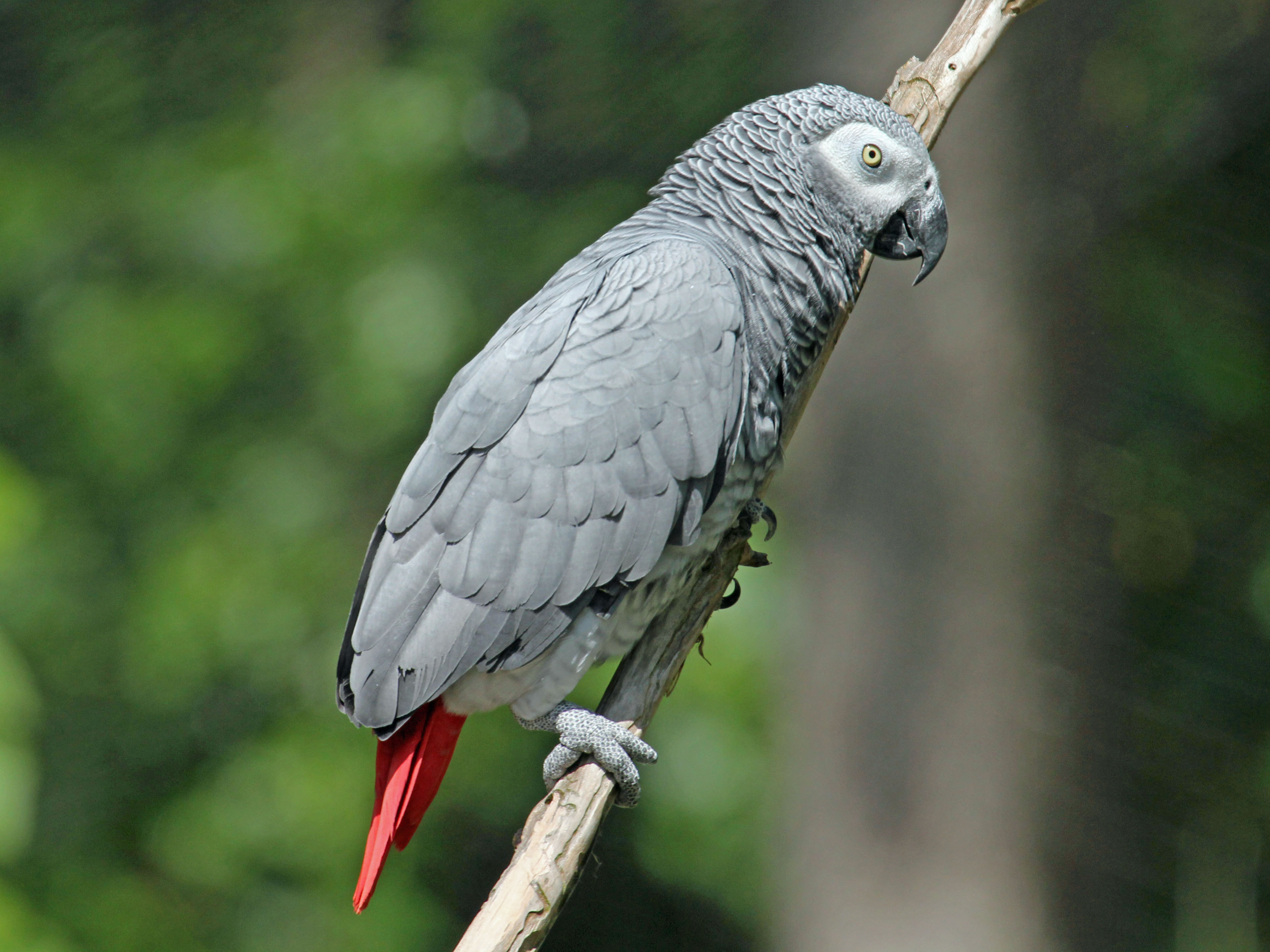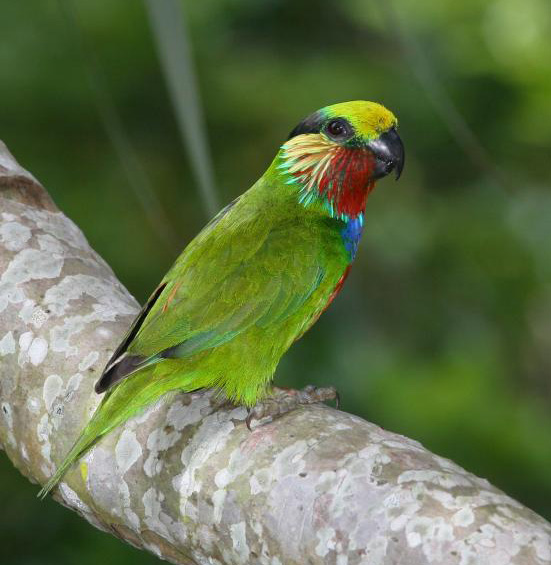|
Psittacinae
Psittacinae is a subfamily of Afrotropical or Old World parrots, native to sub-Saharan Africa, which include twelve species and two extant genera. Among the species is the iconic grey parrot. The ''Poicephalus'' are usually green birds with different colored heads; the larger ''Psittacus'' are light grey with red tails. African parrots (at least the grey parrot) have been known in Europe since Roman times. The African parrots, unlike their Neotropical cousins, are polyphyletic: ''Agapornis'' of Africa and Madagascar was found to be the sister group to '' Loriculus'' of Australasia and Indo-Malayasia and together they clustered with the Australasian ''Loriinae'', ''Cyclopsittacini'' and '' Melopsittacus''. ''Poicephalus'' and ''Psittacus'' from mainland Africa formed the sister group of the Neotropical ''Arinae'' and '' Coracopsis'' from Madagascar and adjacent islands may be the closest relative of '' Psittrichas'' from New Guinea. Taxonomy This subfamily, together with its ... [...More Info...] [...Related Items...] OR: [Wikipedia] [Google] [Baidu] |
Psittacidae
The family Psittacidae or holotropical parrots is one of three families of true parrots. It comprises the roughly 10 species of subfamily Psittacinae (the Old World or Afrotropical parrots) and 157 of subfamily Arinae (the New World or Neotropical parrots), as well as several species that have gone extinct in recent centuries. Some of the most iconic birds in the world are represented here, such as the blue-and-gold macaw among the New World parrots and the grey parrot among the Old World parrots. Distribution All of the parrot species in this family are found in tropical and subtropical zones and inhabit Mexico, Central and South America, the Caribbean islands, sub-Saharan Africa, the island of Madagascar, the Arabian Peninsula, Southeast Asia, Australia and Oceania. Two parrots, one extinct and the other extirpated, formerly inhabited the United States. Evolutionary history This family probably had its origin early in the Paleogene period, 66–23 million years ago (M ... [...More Info...] [...Related Items...] OR: [Wikipedia] [Google] [Baidu] |
Parrot
Parrots, also known as psittacines (), are birds of the roughly 398 species in 92 genera comprising the order Psittaciformes (), found mostly in tropical and subtropical regions. The order is subdivided into three superfamilies: the Psittacoidea ("true" parrots), the Cacatuoidea (cockatoos), and the Strigopoidea (New Zealand parrots). One-third of all parrot species are threatened by extinction, with higher aggregate extinction risk ( IUCN Red List Index) than any other comparable bird group. Parrots have a generally pantropical distribution with several species inhabiting temperate regions in the Southern Hemisphere, as well. The greatest diversity of parrots is in South America and Australasia. Characteristic features of parrots include a strong, curved bill, an upright stance, strong legs, and clawed zygodactyl feet. Many parrots are vividly coloured, and some are multi-coloured. Most parrots exhibit little or no sexual dimorphism in the visual spectrum. They form the most ... [...More Info...] [...Related Items...] OR: [Wikipedia] [Google] [Baidu] |
Brown-necked Parrot
The brown-necked parrot (''Poicephalus fuscicollis''), sometimes known in aviculture as the uncape parrot, is a large ''Poicephalus'' parrot species endemic to Africa. It consists of two subspecies: the savanna-dwelling brown-necked parrot (''P. fuscicollis fuscicollis'') and grey-headed parrot (''P. f. suahelicus'') subspecies. It formerly included the Cape parrot (now ''Poicephalus robustus'') as a subspecies before the Cape parrot was re-classified as a distinct species. Taxonomy German naturalist Heinrich Kuhl described the brown-necked parrot in his 1819 work ''Conspectus Psittacorum''. Although unsure of its country of origin, he felt it was definitely a distinct species and related to the Cape parrot. The species name is from the Latin words ''fuscus'' "dark" and ''collum'' "neck". South Africa-based ornithologist Phillip Clancey proposed the Cape and brown-necked parrots were separate species in 1997 based on the shape and size of the bill, head coloration and preferred ... [...More Info...] [...Related Items...] OR: [Wikipedia] [Google] [Baidu] |
Psittacus
''Psittacus'' is a genus of African grey parrots in the subfamily Psittacinae. It contains the two species: the grey parrot (''Psittacus erithacus'') and the Timneh parrot (''Psittacus timneh''). For many years, the grey parrot and Timneh parrot were classified as subspecies; the former as the nominate, the latter as ''P. e. timneh''. However, in 2012 the taxa were recognized as separate species by BirdLife International on the basis of genetic, morphological, plumage and vocal differences. These parrots are found in the primary and secondary rainforest of West and Central Africa. They are among the most intelligent birds in the world. They feed primarily on palm nuts, seeds, fruits, and leafy matter, but have also been observed eating snails. Their inclination and ability to mimic speech and other sounds have made them popular pets. Taxonomy The genus ''Psittacus'' was introduced in 1758 by the Swedish naturalist Carl Linnaeus in the tenth edition of his ''Systema Naturae'' ... [...More Info...] [...Related Items...] OR: [Wikipedia] [Google] [Baidu] |
Poicephalus
The genus ''Poicephalus'' belongs to the subfamily Psittacinae of the true parrots (Psittacidae) and comprises ten species of parrots native to various regions of the Afrotropical realm, which encompasses Sub-Saharan Africa, ranging from Senegal in the west, Ethiopia in the east, and to South Africa in the south. Like lovebirds ('' Agapornis'') and vasa parrots ('' Coracopsis''), the latter being endemic to Madagascar, the ''Poicephalus'' parrots are typical specimens of Afrotropical zoogeography. Several of the species exist in slightly different forms, or subspecies. ''Poicephalus'' parrots have been kept as pets and companion birds for centuries, the Senegal parrot perhaps being the most famous species. The trade in this species most likely began in the early 19th century, when Senegal parrots first appeared as companion birds in Europe. Alongside African grey parrots, Senegal parrots still range among the mostly frequently imported parrots from Africa. Appearance Mem ... [...More Info...] [...Related Items...] OR: [Wikipedia] [Google] [Baidu] |
Poicephalus Gulielmi -Birds Of Eden, South Africa-8a
The genus ''Poicephalus'' belongs to the subfamily Psittacinae of the true parrots (Psittacidae) and comprises ten species of parrots native to various regions of the Afrotropical realm, which encompasses Sub-Saharan Africa, ranging from Senegal in the west, Ethiopia in the east, and to South Africa in the south. Like lovebirds ('' Agapornis'') and vasa parrots ('' Coracopsis''), the latter being endemic to Madagascar, the ''Poicephalus'' parrots are typical specimens of Afrotropical zoogeography. Several of the species exist in slightly different forms, or subspecies. ''Poicephalus'' parrots have been kept as pets and companion birds for centuries, the Senegal parrot perhaps being the most famous species. The trade in this species most likely began in the early 19th century, when Senegal parrots first appeared as companion birds in Europe. Alongside African grey parrots, Senegal parrots still range among the mostly frequently imported parrots from Africa. Appearance Memb ... [...More Info...] [...Related Items...] OR: [Wikipedia] [Google] [Baidu] |
Cyclopsittacini
Fig parrots (Cyclopsittini) are a small tribe of Australasian parrots in the family Psittaculidae, made up of five species in two genera (''Cyclopsitta'' and ''Psittaculirostris''). Fig parrots are found on and around the island of New Guinea, within the territories of Indonesia, Papua New Guinea, and tropical Australia. Description Fig parrots are small, stocky, arboreal parrots with short, wedge-shaped tails. They possess proportionately large, broad bills and smooth tongues. Sexual dimorphism is typically pronounced, with the exception of Coxen's fig parrot (''Cyclopsitta diopthalma coxeni''). Those in the genus ''Cyclopsitta'' are generally smaller than those in ''Psittaculirostris''. Their preferred habitats are the tropical and subtropical rainforests, though they can also be found foraging in the surrounding biomes. They can usually be seen flying swiftly in straight lines, well above the tree canopy. Their diets consist mainly of fruit, particularly their namesake figs. ... [...More Info...] [...Related Items...] OR: [Wikipedia] [Google] [Baidu] |
Melopsittacus
The budgerigar ( ; ''Melopsittacus undulatus''), also known as the common parakeet or shell parakeet, is a small, long-tailed, seed-eating parrot usually nicknamed the budgie ( ), or in American English, the parakeet. Budgies are the only species in the genus ''Melopsittacus''. Naturally, the species is green and yellow with black, scalloped markings on the nape, back, and wings. Budgies are bred in captivity with colouring of blues, whites, yellows, greys, and even with small crests. Juveniles and chicks are monomorphic, while adults are told apart by their cere colouring, and their behaviour. The species is the only member of the genus ''Melopsittacus'', which is the only genus in the Melopsittacini tribe. The origin of the budgerigar's name is unclear. First recorded in 1805, budgerigars are popular pets around the world due to their small size, low cost, and ability to mimic human speech. They are likely the third most popular pet in the world, after the domesticated d ... [...More Info...] [...Related Items...] OR: [Wikipedia] [Google] [Baidu] |
Arinae
The neotropical parrots or New World parrots comprise about 150 species in 32 genera found throughout South and Central America, Mexico, the Caribbean islands and (formerly) the southern United States. Among them are some of the most familiar and iconic parrots, including the blue and gold macaw, sun conure, and yellow-headed amazon. The parrots of the New World have been known to Europeans since Columbus remarked upon them in his journal in 1492. Systematic descriptions of the birds were first available in German naturalist Georg Marcgraf's ''Historia Naturalis Brasiliae'' published in 1648, and English naturalist Mark Catesby's two-volume ''Natural History of Carolina, Florida and the Bahama Islands'' published in London in 1731 and 1743. Several species and one genus have become extinct in recent centuries. A second genus is extinct in the wild. Over a third of the extant species are classified as threatened by the IUCN. A few of these are in imminent danger of extinction ... [...More Info...] [...Related Items...] OR: [Wikipedia] [Google] [Baidu] |
Constantine Samuel Rafinesque
Constantine Samuel Rafinesque-Schmaltz (; October 22, 1783September 18, 1840) was a French 19th-century polymath born near Constantinople in the Ottoman Empire and self-educated in France. He traveled as a young man in the United States, ultimately settling in Ohio in 1815, where he made notable contributions to botany, zoology, and the study of prehistoric earthworks in North America. He also contributed to the study of ancient Mesoamerican linguistics, in addition to work he had already completed in Europe. Rafinesque was an eccentric and erratic genius. He was an autodidact, who excelled in various fields of knowledge, as a zoologist, botanist, writer and polyglot. He wrote prolifically on such diverse topics as anthropology, biology, geology, and linguistics, but was honored in none of these fields during his lifetime. Indeed, he was an outcast in the American scientific community whose submissions were rejected automatically by leading journals. Among his theories were th ... [...More Info...] [...Related Items...] OR: [Wikipedia] [Google] [Baidu] |
Psittrichas
Pesquet's parrot (''Psittrichas fulgidus''), also known as the Dracula parrot or as the vulturine parrot (leading to easy confusion with '' Pyrilia vulturina'' from Brazil), is the only member of its genus. It is endemic to hill and montane rainforest in New Guinea. Description Pesquet's parrot is a large parrot with a total length of approximately and a weight of . Its plumage is black, with greyish scaling to the chest, and a red belly, uppertail coverts and wing-panels. The adult male has a red spot behind the eye, which is not seen in the adult female. Compared to most other parrots it appears unusually small-headed, in part due to the bare black facial skin and the relatively long, hooked bill. This rather vulture-like profile is the reason behind its alternative common name. File:PesquetsParrot03.jpg, Female profile showing vulturine features - taken at Cincinnati Zoo File:Psittrichas fulgidus -Jurong Bird Park-8a.jpg, Upper body Behaviour Pesquet's parrot is a highly ... [...More Info...] [...Related Items...] OR: [Wikipedia] [Google] [Baidu] |







